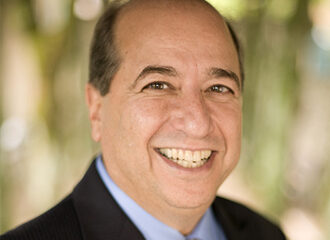Written by: Ashley Moser, LMFT, CEDS (she/her/hers)
Clinical Education Specialist, The Renfrew Center
A misconception about eating disorders is that eliminating symptoms will ‘solve’ or ‘fix’ the disorder. This misconception overlooks the psychological and emotional aspects that contribute to eating disorders and can result in what is commonly referred to as symptom swapping or substitution. In this post, we will identify common emotional maintaining factors that are a vital part of the recovery process and reduce the risk of one eating disorder turning into another.

However, what we know to be true about eating disorders is that they are about far more than food and weight. Eating disorders are emotional disorders and must be addressed as such in order for long term and sustainable recovery to be possible. But what does that look like? And why isn’t stopping the behavior enough?
Symptom Swapping & Managing Eating Disorder Emotions
Eating disorder behaviors serve a function emotionally. Regardless of the specific behavior, eating disorder symptoms are often attempts to cope with uncomfortable emotions. This can look like avoidance of uncomfortable emotions, distraction from them, numbing, disconnecting or even immediate short-term relief. This aspect of an eating disorder is incredibly reinforcing and supports continued use of symptoms even when logically we know these behavioral cycles not helpful in the long-term.
This is why we continue to use eating disorder symptoms even when we do not want to! This is also why just stopping the behavior is not enough to fully heal. When the behaviors stop, the emotions continue and frequently become even more intense. With no adaptive way to manage, it is likely that another symptom will emerge to serve that function. This is how symptom swapping or substituting happens. One behavior may have stopped, but the need for managing distressing emotions has not.
It is important to note that the term ‘negative emotions’ encompasses many emotional elements that may be present for someone struggling with an eating disorder. This includes anxiety, depression, self- esteem issues, trauma, relationship issues etc. Overlooking or minimizing any of these contributing factors in recovery increases the likelihood of symptom substitution and potential relapse.
Eating Disorders and Weight Overview
Another important facet of this conversation is the role of weight in eating disorder recovery. A similar misconception is that changes in weight will ‘fix’ an eating disorder. Some mistakenly believe that if those in larger bodies lose weight or those who are underweight gain weight, the eating disorder will be resolved. Again, weight in this case is seen as the problem that needs to be ‘fixed’.
This messaging can be dangerous and can very likely contribute to the continuation of an eating disorder. Especially so for those larger bodies, pursuing weight loss can result in the development of symptoms associated with anorexia. In this case, restrictive behaviors might replace bingeing behaviors and the eating disorder continues with a different outward presentation. This can happen even unintentionally in the recovery process; diet culture messages and beliefs that support the thin ideal portray restrictive behaviors as ‘better’ than binge behaviors. Weight loss and restriction might even be praised or seen as progress, which can further reinforce one eating disorder turning into another.
So, if changing weight and eliminating eating disorder symptoms are not the final goal or solution, what is?
Doing The Emotional Work
The emotional work is a crucial and oftentimes difficult aspect of eating disorder treatment and recovery. While the specifics of the emotional work for each person may look different, addressing the emotional function of the eating disorder is necessary. Here is a breakdown of what this process can look like.
Improving Awareness: Eating disorder symptoms oftentimes function to avoid, dampen, or decrease distressing emotional experiences. To begin addressing maintaining emotional factors, mindful awareness is foundational. Tuning in to emotional experiences versus tuning out is helpful in building awareness. This can look like practicing mindfulness exercises as well as using emotional awareness skills from Renfrew’s Unified Treatment Model, such as the ‘3 point check’. This is a tool that can be used anywhere to anchor into the present moment emotionally. When emotions come to the surface, simply ask yourself these three questions: What am I thinking? What am I feeling physically in my body? What am I doing or having the urge to do?
Understanding Your Patterns: Awareness of emotions in their context is important and knowing what triggers or antecedents influence your emotions is crucial. Do your lived experiences make your emotions feel more intense in the current moment? Is it linked to trauma, childhood, or relationships? When you feel uncomfortable emotions do you shut down, lash out or ruminate?
Building Emotional Tolerance: This is important! In addition to making steps towards eliminating eating disorder symptoms, improving tolerance to uncomfortable emotions is vital in the sustainability of progress and recovery. This means feeling your feelings without repeatedly using distraction, avoidance or any other behaviors that dampen the emotion. With emotional tolerance comes less need for eating disorder behaviors allowing for full recovery instead of just a different type of disorder.
Conclusion
Eating disorder recovery requires emotional and behavioral change to prevent one eating disorder from turning into another. In order to do this, seeking professional help with a team approach can be helpful so that all aspects of the treatment and recovery process are supported.
The Renfrew Center can help!
The Renfrew Unified Treatment Model is an evidence-based treatment that addresses the maintaining emotional patterns and teaches emotion tolerance.
Specialized programs are offered to address the emotional aspect of specific emotional issues such as trauma, family work and relationships.



